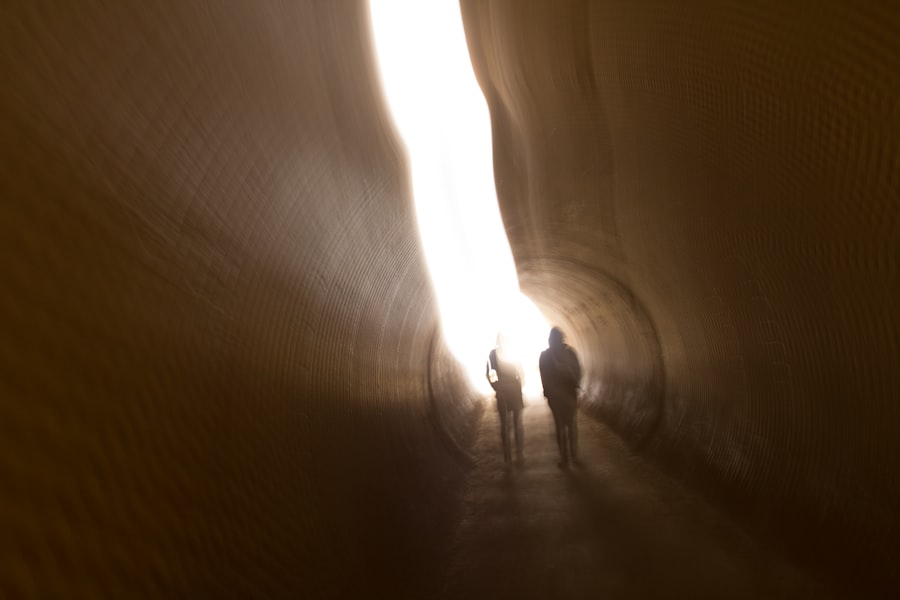The Drake Passage, a body of water that separates South America from Antarctica, is renowned for its tumultuous seas and unpredictable weather. Named after the English explorer Sir Francis Drake, who navigated these waters in the late 16th century, the passage has become a focal point for adventurers, researchers, and wildlife enthusiasts alike. Stretching approximately 600 kilometers (370 miles) at its widest point, it serves as a critical maritime route for vessels traveling to and from the Antarctic region.
The Drake Passage is not merely a geographical feature; it embodies the spirit of exploration and the challenges that come with venturing into some of the most remote areas of the planet. Crossing the Drake Passage is often described as a rite of passage for those seeking to explore Antarctica. The journey is fraught with excitement and trepidation, as travelers brace themselves for the notorious conditions that can arise in this stretch of ocean.
From towering waves to sudden storms, the Drake Passage is a testament to nature’s raw power. Yet, it also offers unparalleled opportunities for adventure and discovery, making it a coveted destination for those with a passion for the great outdoors.
Key Takeaways
- The Drake Passage is a body of water between South America’s Cape Horn and the South Shetland Islands of Antarctica.
- The passage is known for its rough seas and challenging weather conditions due to its location at the confluence of the Atlantic, Pacific, and Southern Oceans.
- The Drake Passage has a rich history of exploration and discovery, with famous expeditions and historical significance dating back to the 16th century.
- Navigating the Drake Passage poses challenges such as strong winds, high waves, and unpredictable weather, making it one of the most challenging maritime routes in the world.
- Safety precautions and navigation techniques are crucial for crossing the Drake Passage, including the use of modern technology and experienced crew members to ensure a safe journey.
Understanding the Geography and Climate of the Drake Passage
The geography of the Drake Passage is characterized by its deep waters and complex ocean currents. It connects the Atlantic and Pacific Oceans, creating a unique marine environment that plays a significant role in global climate patterns. The passage is flanked by the rugged coastlines of Cape Horn to the north and the Antarctic Peninsula to the south.
This positioning results in a convergence of cold polar waters and warmer currents, leading to a dynamic ecosystem that supports a diverse array of marine life. The climate in the Drake Passage is notoriously volatile, with conditions that can change rapidly. The region experiences strong winds, particularly during the winter months, which can lead to rough seas and challenging navigation.
Temperatures can vary significantly, with frigid air masses from Antarctica colliding with warmer air from the north. This climatic instability contributes to the passage’s reputation as one of the most treacherous waterways in the world, where sailors must remain vigilant and adaptable to survive.
Historical Significance of the Drake Passage

The historical significance of the Drake Passage cannot be overstated. It has long been a critical route for explorers and traders seeking to navigate between the Atlantic and Pacific Oceans. Sir Francis Drake’s expedition in 1578 marked one of the first recorded crossings of this treacherous waterway, paving the way for future explorers.
His journey not only demonstrated the potential for maritime trade routes but also highlighted the challenges posed by the passage’s unpredictable conditions. Throughout history, the Drake Passage has been a site of exploration and discovery. It has witnessed numerous expeditions aimed at charting new territories and understanding the natural world.
The passage has also played a vital role in scientific research, particularly in studies related to climate change and marine biology. As researchers continue to explore its depths, they uncover valuable insights into oceanic processes and their implications for global ecosystems.
Challenges of Navigating the Drake Passage
| Challenge | Description |
|---|---|
| Strong Winds | The passage is known for its strong westerly winds, often reaching gale force. |
| Rough Seas | The combination of strong winds and currents can create rough and unpredictable sea conditions. |
| Narrow Passage | The narrowness of the passage can make navigation difficult, especially in poor weather. |
| Icebergs | Icebergs and sea ice can pose a hazard to ships navigating the passage, especially in the colder months. |
Navigating the Drake Passage presents numerous challenges that test even the most seasoned mariners. The combination of strong currents, unpredictable weather patterns, and towering waves creates an environment that demands respect and caution. Sailors must be prepared for sudden changes in conditions, which can turn a calm sea into a raging tempest within minutes.
This unpredictability has earned the passage its reputation as one of the most dangerous stretches of water in the world. In addition to natural obstacles, navigators must also contend with icebergs and floating debris that can pose significant hazards. The presence of icebergs is particularly pronounced during certain times of the year when melting glaciers contribute to an increase in floating ice.
Mariners must remain vigilant and employ advanced navigation techniques to avoid collisions and ensure safe passage through these treacherous waters.
Safety Precautions and Navigation Techniques
Given the inherent dangers associated with crossing the Drake Passage, safety precautions are paramount for any vessel undertaking this journey. Mariners are advised to equip their ships with state-of-the-art navigation systems that can provide real-time data on weather conditions and sea state. Additionally, maintaining a well-trained crew familiar with emergency protocols is essential for ensuring safety during transit.
One effective navigation technique involves utilizing satellite technology to monitor weather patterns and ocean currents.
Furthermore, vessels are encouraged to travel in groups whenever possible, as this can enhance safety through mutual support and assistance in case of emergencies.
Wildlife and Natural Wonders of the Drake Passage

Despite its reputation for perilous conditions, the Drake Passage is home to an astonishing array of wildlife and natural wonders. The nutrient-rich waters support diverse marine life, including various species of fish, seals, and whales. Among these are majestic humpback whales, orcas, and blue whales that migrate through these waters in search of food.
Birdwatchers will also find delight in spotting seabirds such as albatrosses and petrels soaring above the waves. The natural beauty of the Drake Passage is equally captivating. The dramatic landscapes surrounding the passage feature rugged cliffs, icy glaciers, and stunning vistas that leave travelers in awe.
The interplay between light and water creates breathtaking scenes that change with every passing moment, making it a photographer’s paradise. For those fortunate enough to witness these wonders firsthand, crossing the Drake Passage becomes an unforgettable experience that transcends mere travel.
Tips for Traveling through the Drake Passage
Traveling through the Drake Passage requires careful planning and preparation to ensure a safe and enjoyable experience. One essential tip is to choose the right time of year for crossing. The summer months, from November to March, generally offer more favorable weather conditions, making it an ideal time for expeditions to Antarctica.
During this period, travelers can expect milder temperatures and calmer seas. Another important consideration is selecting a reputable tour operator with experience navigating these waters. A knowledgeable crew can provide valuable insights into safety protocols and local wildlife while enhancing the overall experience.
Additionally, travelers should pack appropriately for varying weather conditions, including waterproof gear and layers to accommodate temperature fluctuations.
Popular Routes and Destinations in the Drake Passage
Several popular routes traverse the Drake Passage, each offering unique opportunities for exploration and adventure. One of the most well-known routes is from Ushuaia, Argentina, to various destinations along the Antarctic Peninsula. This journey typically takes around two days to cross the passage, allowing travelers to experience both the challenges of navigation and the breathtaking beauty of Antarctica.
Another notable route includes trips to South Georgia Island or the Falkland Islands, both rich in wildlife and history. These destinations provide additional opportunities for exploration beyond Antarctica itself, allowing travelers to immerse themselves in diverse ecosystems and learn about their significance in global conservation efforts.
The Role of Technology in Navigating the Drake Passage
In recent years, advancements in technology have significantly improved navigation through the Drake Passage. Modern vessels are equipped with sophisticated radar systems, GPS technology, and weather forecasting tools that enhance safety and efficiency during transit.
Moreover, satellite communication has revolutionized how vessels communicate while at sea. Crew members can stay connected with shore-based support teams, ensuring access to vital information regarding weather updates or emergency assistance if needed. As technology continues to evolve, it promises to further enhance safety measures and navigation techniques in this challenging maritime environment.
Stories and Legends of the Drake Passage
The Drake Passage is steeped in stories and legends that reflect its rich history as a site of exploration and adventure. Tales of shipwrecks and daring rescues abound, capturing the imagination of those who hear them. One such legend involves Sir Francis Drake himself, who is said to have encountered fierce storms during his voyage that tested his resolve as an explorer.
Additionally, local folklore often speaks of mythical sea creatures lurking beneath the waves—tales passed down through generations by sailors who braved these waters long before modern navigation tools existed. These stories serve as a reminder of humanity’s enduring fascination with the unknown and our desire to conquer nature’s challenges.
The Thrill and Adventure of Crossing the Drake Passage
Crossing the Drake Passage is an adventure unlike any other—a thrilling journey that combines natural beauty with formidable challenges. For those who dare to navigate its waters, it offers an opportunity to connect with nature on a profound level while experiencing firsthand the power of one of Earth’s most dynamic environments. From its rich history to its diverse wildlife, every aspect of this passage contributes to its allure as a destination for explorers seeking both excitement and enlightenment.
As travelers reflect on their experiences crossing this legendary waterway, they carry with them not only memories of breathtaking landscapes but also a deeper appreciation for the forces that shape our planet. The thrill of crossing the Drake Passage remains etched in their minds—a testament to human resilience in the face of nature’s grandeur.
The Drake Passage is a significant body of water that lies between the southern tip of South America and Antarctica, known for its challenging navigation conditions due to strong currents and unpredictable weather. This passage is a crucial part of the global oceanic circulation, playing a vital role in the mixing of ocean waters. For those interested in exploring more about geographical wonders and their impact on our planet, you might find the article on MyGeoQuest insightful. It delves into various geographical phenomena and their significance, providing a broader understanding of our world’s natural features.
WATCH NOW! Drake Passage: Earth’s Deadliest Waters Revealed
FAQs
What is the Drake Passage?
The Drake Passage is a body of water located between the southern tip of South America (Cape Horn) and the South Shetland Islands of Antarctica. It connects the Atlantic Ocean to the Pacific Ocean.
Why is the Drake Passage significant?
The Drake Passage is significant because it is the narrowest stretch of ocean between Antarctica and any other landmass. It is known for its rough seas and strong winds, making it a challenging and iconic route for ships traveling to and from Antarctica.
How did the Drake Passage get its name?
The Drake Passage is named after the English explorer Sir Francis Drake, who is believed to have been the first European to sail through the passage in 1578.
What is the weather like in the Drake Passage?
The weather in the Drake Passage is characterized by strong winds, high waves, and rough seas. It is known for its stormy conditions and is often referred to as one of the roughest stretches of water in the world.
What wildlife can be found in the Drake Passage?
The Drake Passage is home to a diverse range of marine wildlife, including whales, seals, and various species of seabirds. It is also a popular area for whale-watching and bird-watching expeditions.
